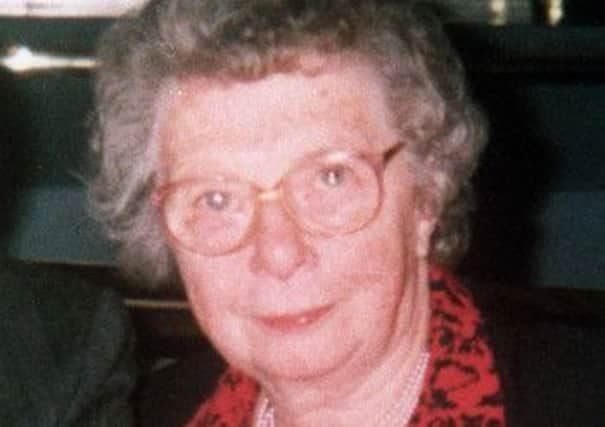Gun used to murder Dungannon pensioner ‘may have been tampered with’


An abrasive material, possibly sandpaper, was used to distort the firing pin of the Czech-bought assault rifle which has also been linked to eight other loyalist shootings, an inquest was told.
Jonathan Greer, a forensic scientist who re-examined the gun in 2013, said the action may have been a deliberate attempt to hinder the identification process.
Advertisement
Hide AdAdvertisement
Hide AdHe said: “It looked as if somebody had taken the firing pin and abraded it... with sand paper.
“It could have been part of a cleaning regime or possibly to make it look like it came from a different weapon”.
Roseann Mallon, 76, was gunned down while watching television at a relative’s house in Co Tyrone on May 8, 1994.
The spinster, who suffered from arthritis, was unable to escape when the Ulster Volunteer Force (UVF) gunmen indiscriminately opened fire spraying the bungalow at Cullenrammer Road, Dungannon, with bullets.
Advertisement
Hide AdAdvertisement
Hide AdA long-awaited inquest resumed at Belfast’s Laganside court complex after an adjournment of more than a year.
The hearing was told that, in 1994, a little-known police intelligence unit - the Weapons and Explosives Research Centre (Werc) - had operated alongside the Northern Ireland Forensic Science Agency and examined weaponry before it was passed to civilian scientists for analysis.
Dr Ruth Griffin, a senior forensic scientist, said: “If it is only a firearms examination that is required, then it can go to Werc first.”
Procedures were changed in 1997 to give the first access to forensic scientists, the court was told.
Advertisement
Hide AdAdvertisement
Hide AdBarry Macdonald QC, barrister for the Mallon family, claimed the existence of Werc - a unit which fell under the remit of Royal Ulster Constabulary (RUC) Special Branch - created “scope” for the tampering of evidence.
He said: “Is it not obvious that if material could be sent to a Special Branch department before civilian forensic scientists, there is scope for material to be tampered with.”
It was also claimed that the existence of Werc was not well known and had not been referred to in court documents before 2006.
High Court Judge, Mr Justice Weir, said: “I cannot remember the existence of Werc ever being discussed or disclosed.”
Advertisement
Hide AdAdvertisement
Hide AdNotorious killer Billy Wright, who was murdered in 1997 - and two other loyalists, were arrested and questioned about Ms Mallon’s murder - but no-one was convicted.
The UVF said its mid-Ulster brigade had been responsible and were targeting two of her nephews, Christopher Mallon - who was not home at the time, and Martin Mallon - who lived half a mile away.
After the shooting, Army spying equipment was found in a nearby field, sparking claims of security force collusion.
The inquest was told that nine spent bullet casings had been recovered from the Mallon murder scene and sent to the forensic science laboratory.
Advertisement
Hide AdAdvertisement
Hide AdWithin an hour and 20 minutes of the cartridges being received on May 9 1994 - a day after the shooting - Werc had concluded there was no history for the weapon from which they were fired, the court heard.
Mr Macdonald said: “It is pretty obvious that these nine cartridges came into forensic science and went straight to Werc and not to any forensic scientist.”
Dr Griffin was unable to state whether the metal casings had been sent for fingerprint analysis before being examined by Werc.
She said: “I would need to check. I was not asked about that particular sequence of examination. My records would need to be reviewed to see if I can answer that question.”
Advertisement
Hide AdAdvertisement
Hide AdMeanwhile, it emerged that an investigation by the Historical Enquiries Team - a now defunct specialist unit set up to re-examine Troubles-related cold cases - linked the VZ-58 rifle to the UVF killings of Charles and Theresa Fox at The Moy in 1992, as well as the murders of John Quinn, Dwayne O’Donnell, Malcolm Nugent and Tommy Armstrong outside a bar in Cappagh in 1991.
It was microscopically matched to nine spent bullet cases recovered from the Fox’s murder scene and 14 casings from Cappagh.
Sean Doran, barrister for the Coroners Service, said: “It has been established that the weapon used in the Mallon murder can be linked to eight other incidents by microscopic analysis.”